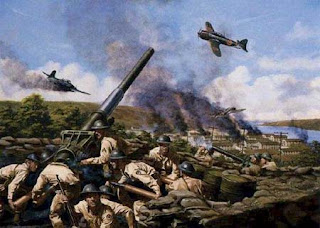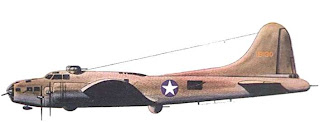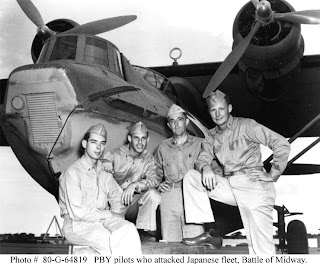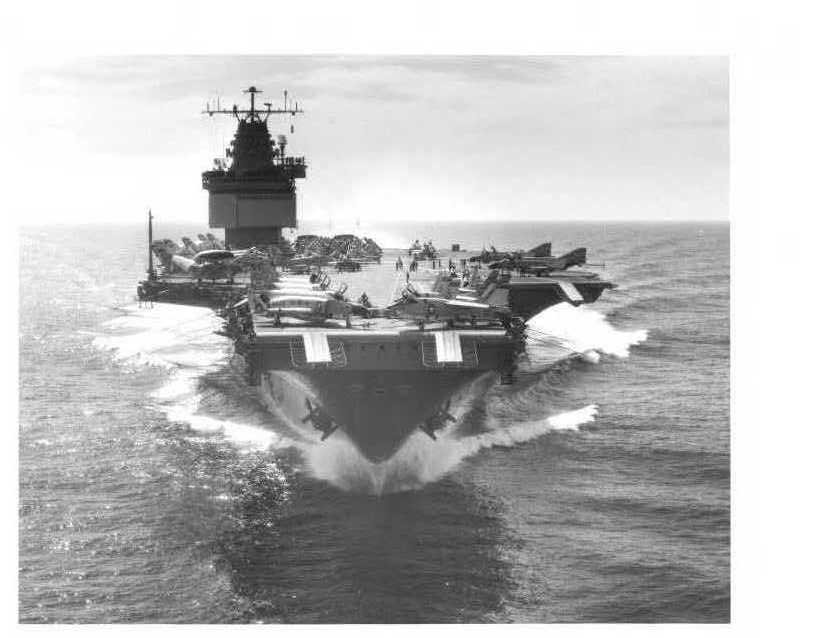Countdown to Midway: 3 June – First Contact
ALASKA: In an attempt to divert forces from the Midway area, a Japanese carrier-based bombers and fighters bomb and strafe Ft Mears and Dutch Harbor in several waves inflicting little damage but killing 52 US personnel. P-40s from Cold Bay trying to intercept them arrive 10 minutes after the last attack wave departs. Other P-40s at Umnak are notified too late due to communication failure. 9 P-40s and 6 B-26s fly a patrol but cannot find the fleet-l80 miles (288 km) S of Dutch Harbor- but 2 of the P-40s engage 4 carrier-based aircraft, shoot down one and damage another. An A6M2 Zero fighter crashes in the Aleutian Islands and is discovered intact five weeks later. It is shipped to the United States for testing and evaluation. (ed. – this is the Zero that the urban legend about the design of the F6F sprang from; in fact, the F6F will fly for the first time in a little over 3 weeks from today’s date)
- Alaska – Japanese occupy Kiska and Attu in the Aleutians.
CHINA-BURMA-INDIA (CBI) THEATER OF OPERATIONS: A flight of 6 B-25s of the 11th Bombardment Squadron (Heavy), 7th Bombardment Group (Heavy), earmarked for China, take off from Dinjan, India for China. They bomb Lashio, Burma en route to Kunming, but afterward 9 crashed into an overcast-hidden mountain at 10,000 feet (3,048 m) and another is abandoned when it runs out of fuel near Chan-i, China. The remaining 2 B-25’s reach Kunming, China, 1 with its radio operator killed by a fighter.
PACIFIC OCEAN AREA (POA, 7th Air Force): Preliminary action begins in the Battle of Midway …
On the morning of 3 June 1942 (4 Jun as the calendar was observed by the ships of Kido Butai), elements of Tanaka’s invasion force were discovered by PBYs flying out of Midway. Fist detection of the supporting minesweepers came @ 0830L and followed by another sighting by a different PBY forty-five minutes later (the infamous “Main Body” report). This was a good 700 nm from Midway and after Midway’s air commander satisfied himself it wasn’t the carriers, a long range strike by the Midway-based B-17’s was launched. Indicative of the distances the coming battle would be fought, the first attack force reached Tanaka’s ships around four hours later. Setting up for their runs from 8 to 12 thousand feet above the force, Tanaka’s ships did not react until the bombs were starting to explode around them. Maneuvering to avoid hits, all the ships escaped being hit, despite claims by the returning bombers of having hit and damaged or sunk five large ships.
As alluded to above, the distances in this theater of battle were huge – how each side developed and implemented their search surveillance plan would be critical. At this stage of the war, radar was not available for use in search aircraft with large, ungainly sets and antennas being the province of ships. Even then, the limitations of the radar horizon (straight-line distance to the Earths horizon. Below which surface and low flying targets could not be seen) which was approximately 30 -40 miles, severely constrained the employment of radar for now. Instead, scouting was to be carried out by land- and ship-based aircraft (ship-based only for Japan), one of the original missions envisioned for aircraft in their early naval days. Additionally, picket lines of submarines would be used to form a warning barrier that would be tripped by passage of the other side’s carriers.
The scouting aircraft used by the Japanese were either the Type 95 float plane (a range-limited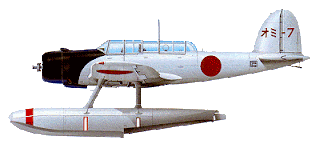
 bi-plane) or the fewer in number Aichi E31A Jake Type 0 float plane. Commonly found on heavy cruisers and battle ships, the former was found in far greater numbers the morning of 3 June. As such, because of the range demands, the limited numbers of Jakes were pressed into service. With a crew of three (pilot, bombardier and gunner) the Jake had a combat/search radius of about 600-650 nm. The search plan for Kido Butai had Jakes launching from Akagi, Kaga, Tone (2) and Chikuma (2). Flying out on assigned radials originating from Kido Butai’s center, each plane would fan out to 300 nm, turn left for 60 nm and then fly back to the origin point (see illustration below). At the patrol altitude of 1200-2000 ft, an optical search swath of about 25 nm, centered on the plane’s ground track could be maintained. Absent any other factors or tipper information, it was a chancy plan at best. Tipper information would come from tripwire notification passed by the submarine pickets as they picked up the carriers leaving Oahu. Except that by the time the subs arrived, the carriers had already left.
bi-plane) or the fewer in number Aichi E31A Jake Type 0 float plane. Commonly found on heavy cruisers and battle ships, the former was found in far greater numbers the morning of 3 June. As such, because of the range demands, the limited numbers of Jakes were pressed into service. With a crew of three (pilot, bombardier and gunner) the Jake had a combat/search radius of about 600-650 nm. The search plan for Kido Butai had Jakes launching from Akagi, Kaga, Tone (2) and Chikuma (2). Flying out on assigned radials originating from Kido Butai’s center, each plane would fan out to 300 nm, turn left for 60 nm and then fly back to the origin point (see illustration below). At the patrol altitude of 1200-2000 ft, an optical search swath of about 25 nm, centered on the plane’s ground track could be maintained. Absent any other factors or tipper information, it was a chancy plan at best. Tipper information would come from tripwire notification passed by the submarine pickets as they picked up the carriers leaving Oahu. Except that by the time the subs arrived, the carriers had already left.
Contrast that search plan with the American  plan – with 127 search aircraft (primarily PBYs backed up by thirty plus Marine SBDs as well as the B-17’s) on Midway, the Americans already had a more robust search capability. The PBY’s range was double that of the Japanese scouts and with a crew of 9, able to cover a search area. The American subs were also on station as well. But perhaps the most important distinction was the difference in employment of carrier air for scouting/search. Unlike the US, which had scouting squadrons assigned to the CVs (usually with SBDs assigned), the IJN did not employ carrier air. The primary reason goes back to operational philosophy and employment. The IJN was the first to use massed carriers to effectively employ carrier-based air. As such, they did not believe in dissipating any CV-based assets via scouting missions, preferring instead to reserve the force for massed attacks on the target(s) once located. The implications of this differing philosophy would be seen in the following day’s battle.
plan – with 127 search aircraft (primarily PBYs backed up by thirty plus Marine SBDs as well as the B-17’s) on Midway, the Americans already had a more robust search capability. The PBY’s range was double that of the Japanese scouts and with a crew of 9, able to cover a search area. The American subs were also on station as well. But perhaps the most important distinction was the difference in employment of carrier air for scouting/search. Unlike the US, which had scouting squadrons assigned to the CVs (usually with SBDs assigned), the IJN did not employ carrier air. The primary reason goes back to operational philosophy and employment. The IJN was the first to use massed carriers to effectively employ carrier-based air. As such, they did not believe in dissipating any CV-based assets via scouting missions, preferring instead to reserve the force for massed attacks on the target(s) once located. The implications of this differing philosophy would be seen in the following day’s battle.
Later that evening, PBYs carrying jury-rigged torpedoes conduct a night attack on the supporting forces. One torpedo finds a target, impacting and detonating on the bow of a fleet oiler. Though slowed by the damage, it manages to rejoin the supporting fleet. Ironically, this would be the only successful airborne torpedo attack of the coming battle…

